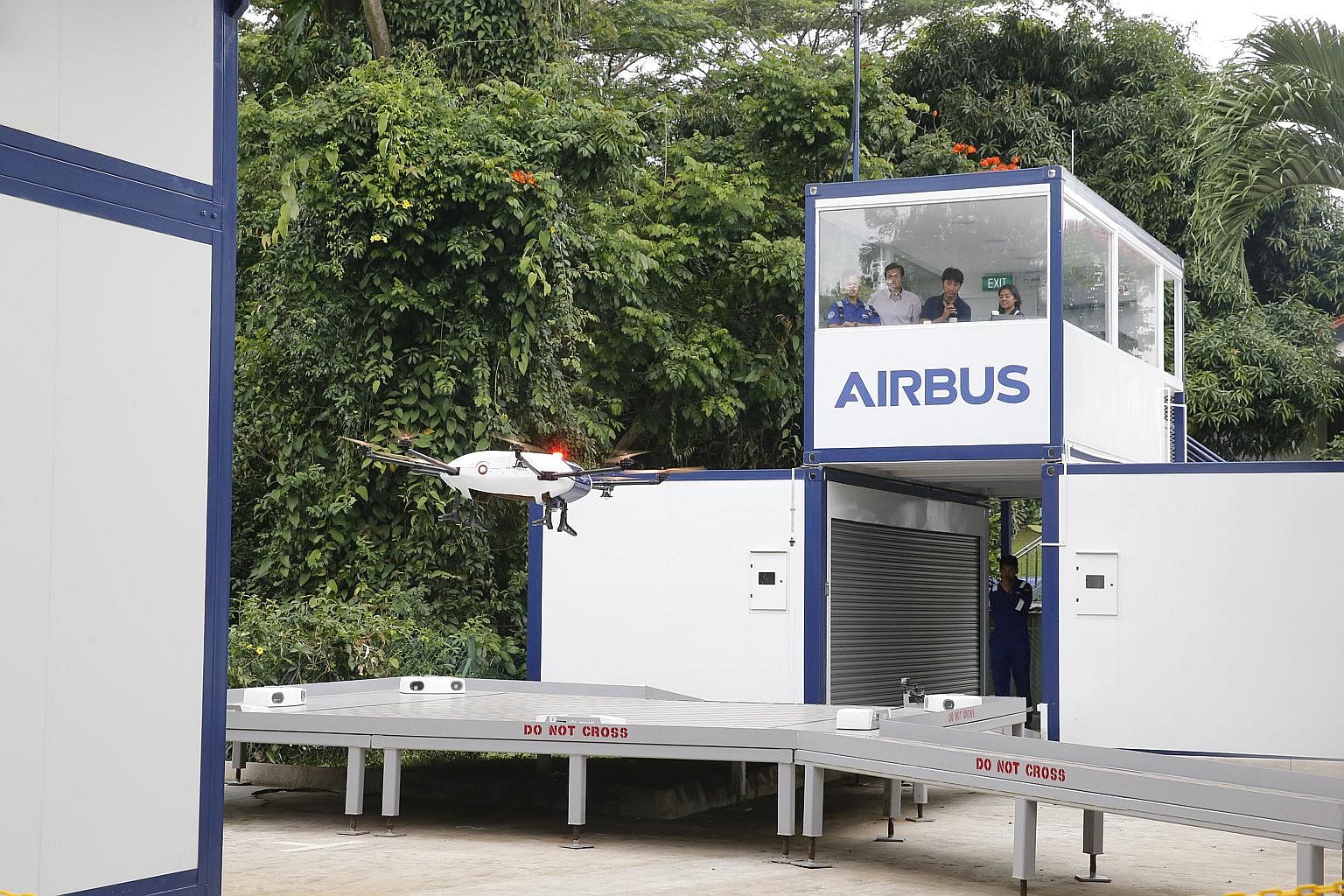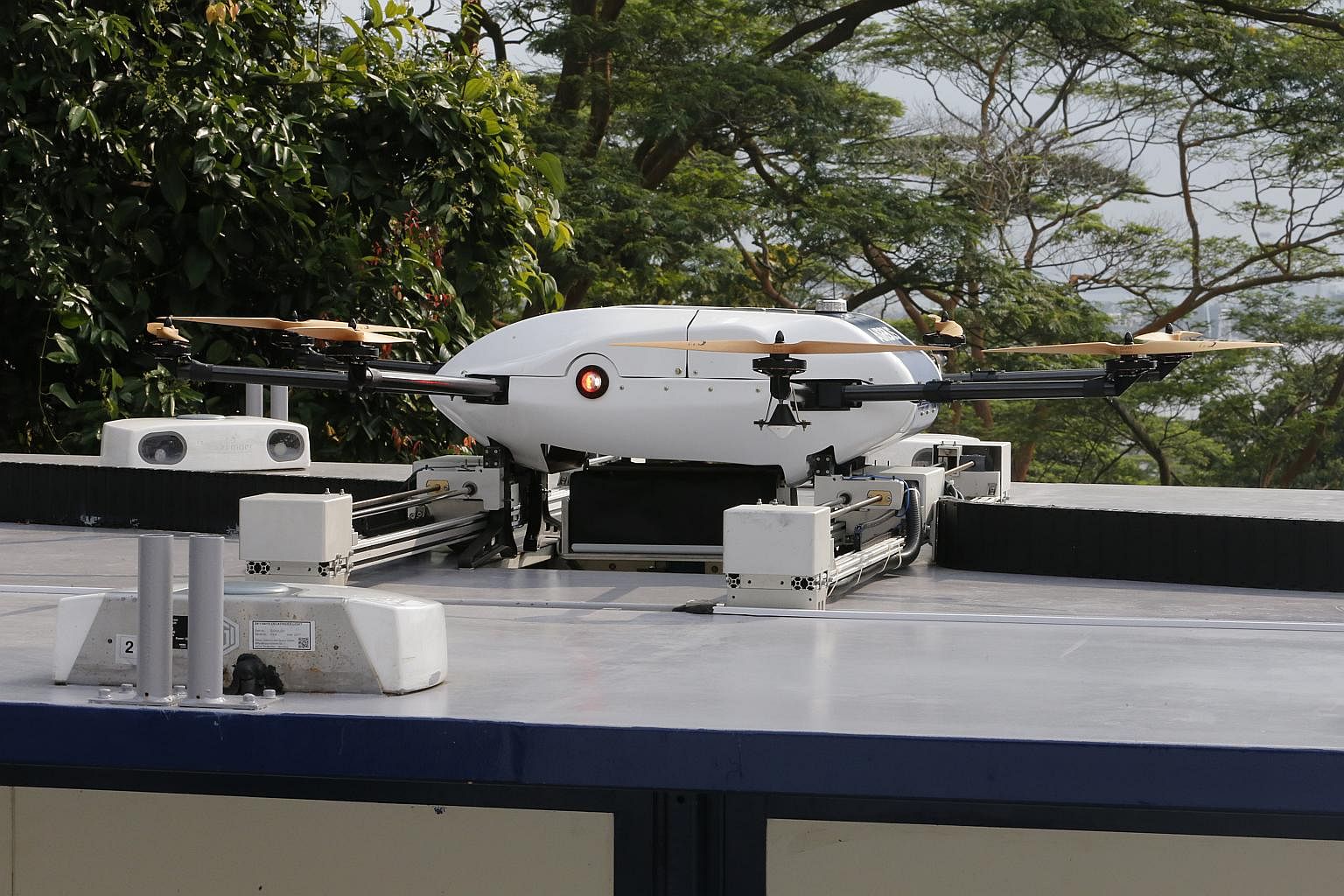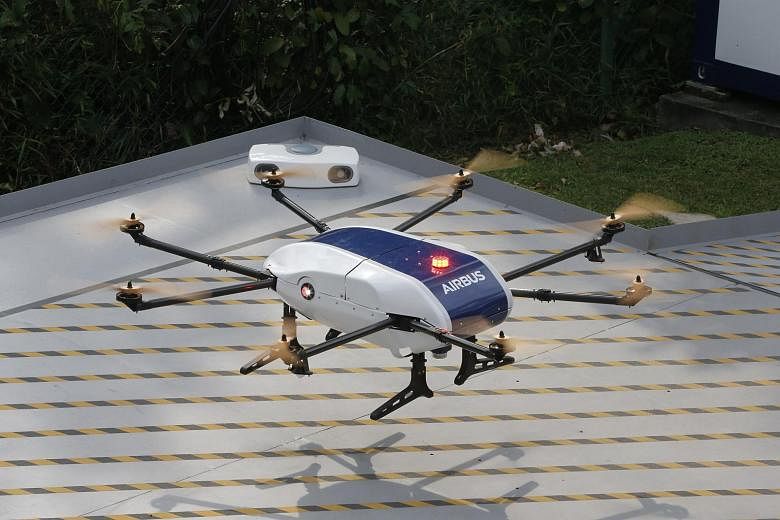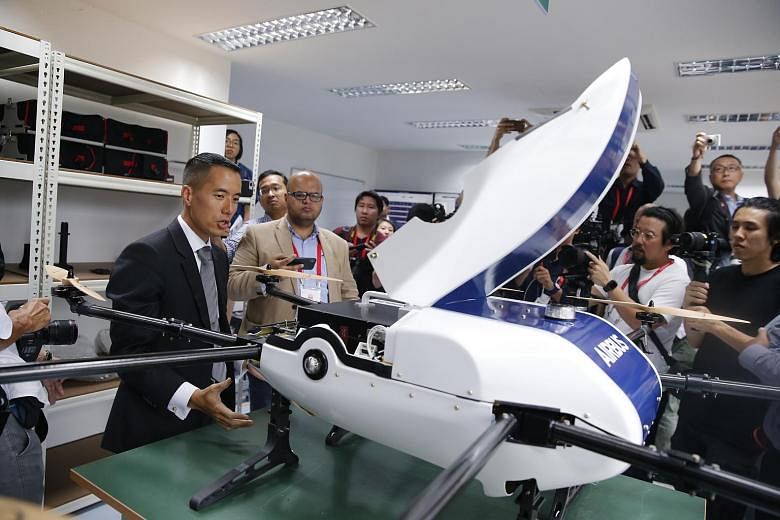SINGAPORE - Santa and his reindeer could be out of work at the National University of Singapore (NUS) this Christmas.
Students there are looking into delivering gifts using drones, with recipients getting a phone message telling them to pick up their present from a parcel station similar to the POPstations across the island.
There was a buzz on campus on Thursday (Feb 8) as European planemaker Airbus demonstrated the first flight of its Skyways unmanned air vehicle-two years after the project was launched in collaboration with the Civil Aviation Authority of Singapore (CAAS).
Singapore Post came on board as a logistics partner in April 2017.
It remains to be seen however, whether drones will send parcels across the island, although stakeholders say the project has been making good progress.
The inaugural flight, a media demonstration, saw a drone take off from its maintenance centre, land on a station metres away and collect a parcel through a hatch.
The drone, which was controlled remotely, seemed slightly unstable in flight and took two to three minutes to land on the station and retrieve the parcel before taking off.
Skyways project leader Leo Jeoh, from Airbus, told The Straits Times that when the drones are flying autonomously and more data is collected, operations should be smoother.
The project is at an advanced stage of development.
The team behind it hopes to have a fully operational trial underway at the university by the middle of this year with autonomous drones flying in pre-defined routes and dropping off packages weighing less than 4kg at parcel lockers across the campus, which is the size of 150 football fields.

Each machine has eight motorised rotors and the drone can fly even if half of them are out of action.
The drones will not be flown in bad weather conditions such as heavy thunderstorms and strong winds.
"We are prepared to take this project nationally," said CAAS director-general Kevin Shum at the demonstration. "But it needs to be done on a 'phase' basis."

He added that the project has to prove its safety to the authorities and users before moving on to the next stage. "Each phase will be bolder than the previous phase, until ultimately we are able to roll it out nationally."
But Mr Shum stopped short of specifying a timeline due to the nature of research and development.
Mr Freddy Chang, SingPost's vice-president of operations added that no-fly zones will have to be considered if the project is expanded.
There are also concerns about how the public will react to the gadgets.
CAAS senior director (safety regulation) Tan Kah Han said one risk factor considered was the drones cause distractions to cars on the nearby Ayer Rajah Expressway.
He added that educating the public about the system will minimise adverse reaction.
"If you are at home in your HDB flat, and in the middle of the night something is flying around outside... you might ask 'Is it looking at me?" he said.
Mr Alain Flourens, Airbus Helicopters' chief technical officer, said: "Today's flight demonstration paves the way positively to our local trial service launch in the coming months.
"Safe and reliable urban air delivery is a reality not too distant into the future."



